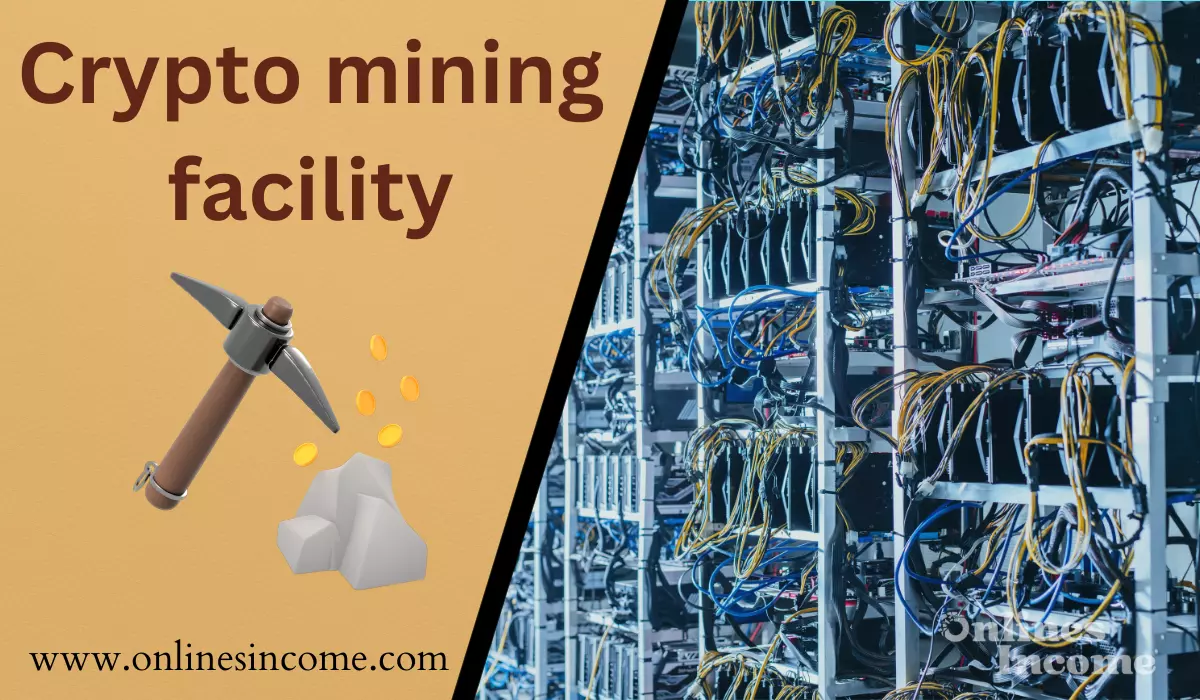Cryptocurrency mining has surged in popularity, and the backbone of this burgeoning industry lies within crypto mining facilities. These facilities are the epicenters of computational power, orchestrating the intricate processes that validate and record transactions on the blockchain. Let’s delve into the workings, impact, and multifaceted aspects of these essential hubs of digital currency production.

Components of a Crypto Mining Facility
Crypto mining facilities are specialized data centers equipped with high-performance hardware dedicated to solving complex mathematical puzzles. These puzzles, integral to the validation of cryptocurrency transactions, require significant computational power. Mining facilities house a multitude of processors, ASICs (Application-Specific Integrated Circuits), and GPUs (Graphics Processing Units), meticulously designed to handle these computations efficiently.
The Anatomy of a Mining Facility
A well-structured mining facility comprises several critical components. High-end hardware forms the core, augmented by sophisticated cooling systems to prevent overheating. These facilities demand substantial power, often necessitating strategic locations near robust energy sources.
The Criticality of Location Selection
Selecting an optimal location for a mining facility involves meticulous planning. Factors such as climate, energy costs, and proximity to power sources significantly impact operational efficiency and profitability. Geographical advantages can enhance a facility’s productivity while minimizing operational overheads.
Balancing Environmental Impact
The energy-intensive nature of crypto mining raises concerns about its environmental footprint. Initiatives employing renewable energy sources and energy-efficient hardware aim to mitigate these concerns, steering the industry towards sustainability.
Security: Paramount in Mining Operations
Security remains paramount in safeguarding mining operations against cyber threats and physical breaches. Advanced encryption protocols and stringent access controls are implemented to fortify these facilities.
Navigating Economic Realities
Establishing and maintaining a mining facility necessitates substantial investments. Calculating the initial outlay, ongoing operational costs, and revenue generation projections are vital considerations for potential investors.
Regulatory Hurdles and Compliance
Navigating the evolving regulatory landscape surrounding cryptocurrency mining poses challenges. Compliance with legal frameworks and adapting to regulatory changes are crucial for sustainable operations.
Technological Evolution in Mining
The rapid evolution of mining technology continues to redefine the landscape. Innovations in hardware and software aim to enhance efficiency and adaptability, paving the way for future advancements.
Impacting Cryptocurrency Networks
Mining facilities play a pivotal role in validating transactions on cryptocurrency networks. The computational power they contribute ensures the integrity and security of these decentralized systems.
Societal and Community Effects
The presence of mining facilities can significantly impact local communities, influencing infrastructure, employment, and economic dynamics. Addressing social perceptions and fostering positive community relations are essential aspects for sustainable coexistence.
Conclusion
Crypto mining facilities represent the nucleus of cryptocurrency ecosystems, driving the validation and security of transactions. Their multidimensional impact spans technological advancements, economic considerations, environmental responsibilities, and societal engagements. As this industry evolves, balancing innovation with responsibility remains pivotal for its sustainable growth.
